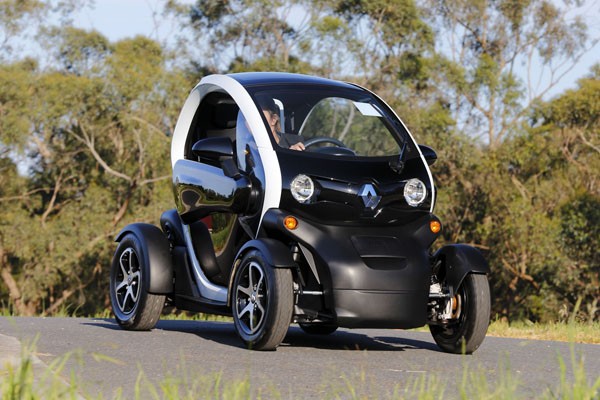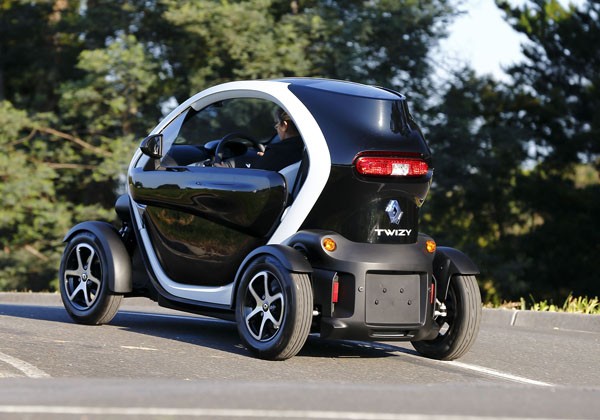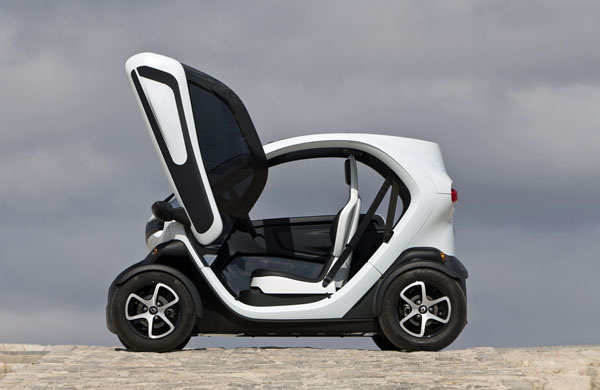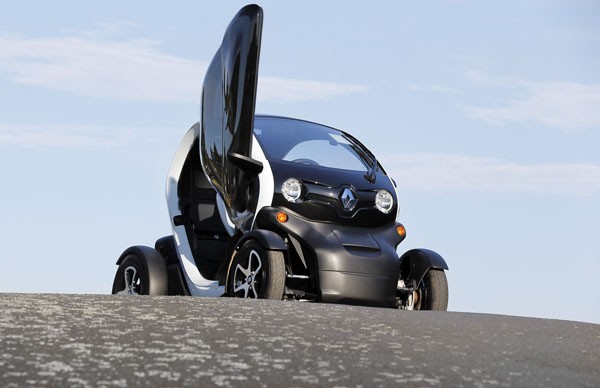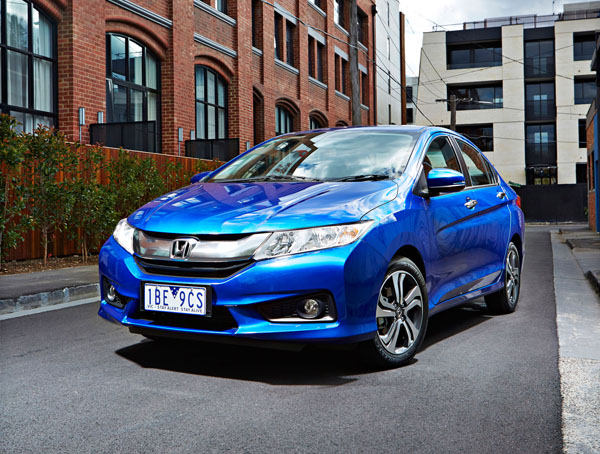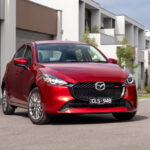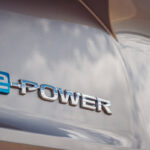Renault Twizy is a tiny two-seat car powered by electricity that doesn’t take up much road space. Indeed Twizy’s footprint isn’t much bigger than that of a large motorbike and you can park two, sometimes three, into at typical parking space in a high-rise building or shopping centre.
As a real bonus, no matter how claustrophobic these carparks are Twizy don’t add exhaust fumes to the air you’re breathing.
Twizy can turn around in not much more than its own length – on a recent trip to Paris I saw one wending its way around one of the huge, completely clogged roundabouts that are a sad feature of that otherwise beautiful city. Many a car driver looked at the Twizy leaving them behind, and you could ‘see’ the thought bubbles over their heads wondering if they, too, should have one of these minute machines.
On the road – actually at a driver training facility near Melbourne as the radical Renault can’t be registered in Australia yet – we loved the tiny Twizy.
Like all electric cars it has excellent acceleration the moment you hit the pedal. It zips around corners with plenty of verve, brakes hard (adding electricity to the batteries when doing so), has exceptional visibility to the front and side and hums along with little noise.
The driver is held in place by an unusual four-point seatbelt. You slip the right-hand belt over your arm, then put the belt on the left, which is a normal lap-sash unit, over the right-side belt. It sounds complicated, but is really easy in reality.
The rear seat passenger has a conventional lap-sash belt. There’s not a lot of space in the back there and you sit with your legs on either side of the driver’s seat. The rear seat base can be turned upside down to provide a lockable box. There are two gloveboxes on the dash, but only one is lockable, that are capable of taking purses, wallets, phones, small tablet computers and the like.
Note however, that maximum payload is listed as just 115 kg, a couple of big Aussies could put it beyond that.
Believe it or not the doors are an optional extra, as are the sunroof and the alloy wheels shown in our pictures. Slide in clear plastic panels can be fitted as basic windows. But as there are no handles on the outside of the doors (don’t you just love these quirky French folks?) entry would mean having to remove one of these windows.
Renault Twizy has a 13 kW electric motor running from a lithium-ion battery. This charges from ‘empty’ in about 3.5 hours using a normal 10 amp household power point. Range is claimed to be 70 to 80 kilometres. As the motor isn’t running when the Twizy is stationary in traffic (an unlikely event!) the range doesn’t change significantly, the way a petrol or diesel does.
Depending on the time of day, and the deal you’ve done with your electricity supplier, a complete charge will cost from $2 to $5.
Is this the future of travel in our big cities? In Europe almost certainly, if the Renault Twizy is a success, and 14,000 have been sold since it was launched in March 2012, others will come up with competing designs.
In Australia the Twizy would work well in the capital cities, where more and more high-rise apartments are being built, seemingly by the day.
However, while Twizy is welcomed by governments in Europe and buyers are given encouragement in various ways. Nothing – repeat nothing – is being done by Australian governments to encourage low-emission vehicles. There’s still denial on climate change by some of Australia’s senior politicians, so potential buyers downunder miss out on sales tax savings, cheaper registration, free parking, the ability to drive in transit lanes, and numerous other things offered in more mature countries.
I find that embarrassing…




